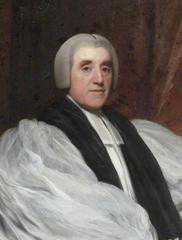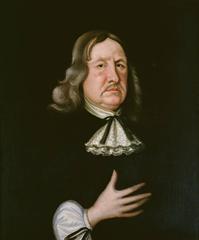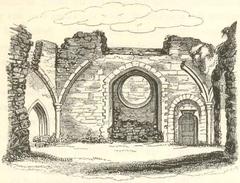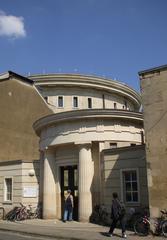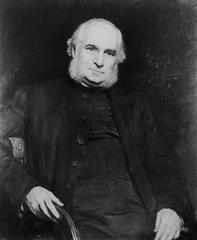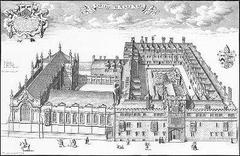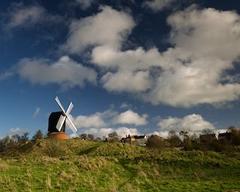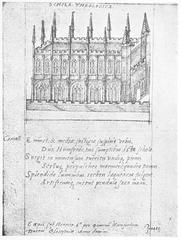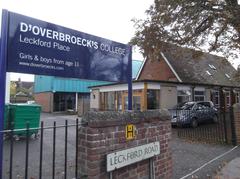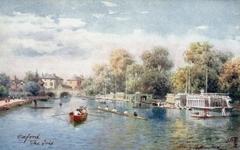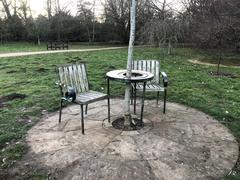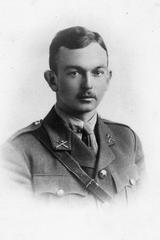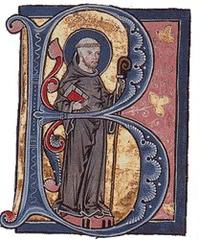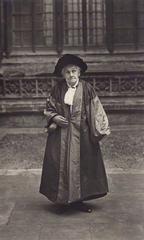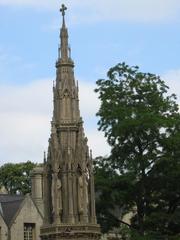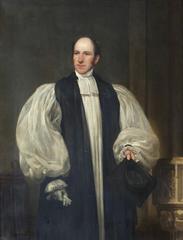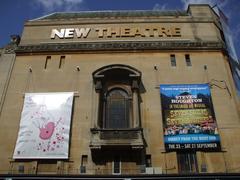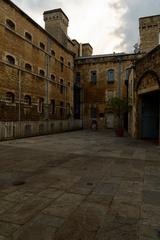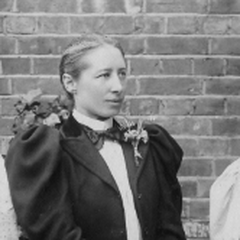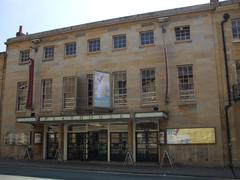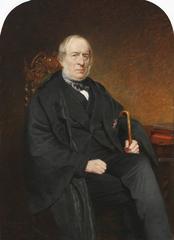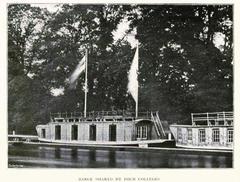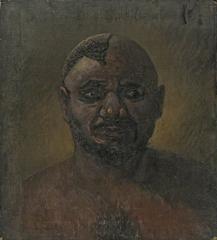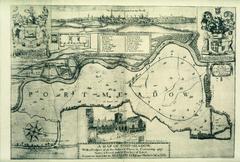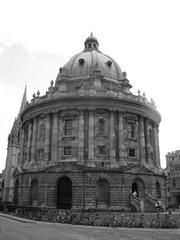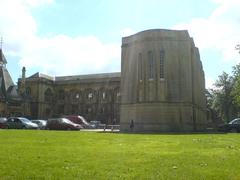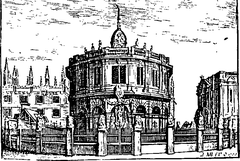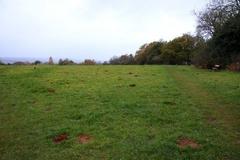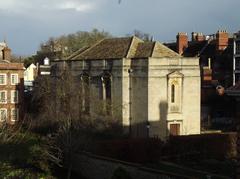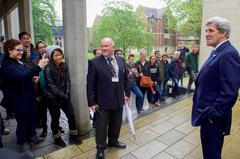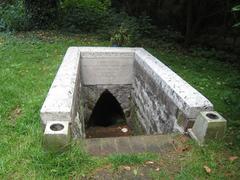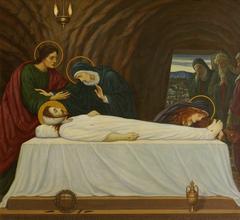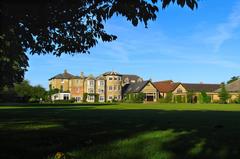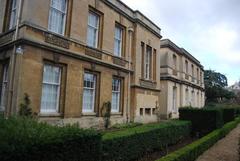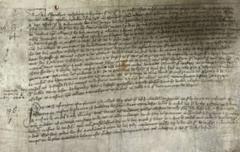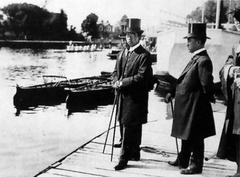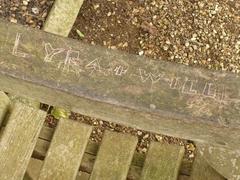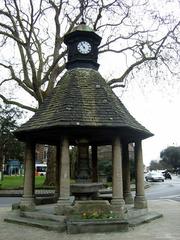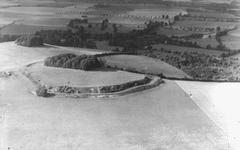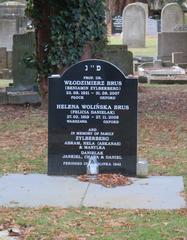
Godstow Abbey Visiting Hours, Tickets & Historical Sites Guide in Oxford
Date: 04/07/2025
Introduction: Godstow Abbey’s Enduring Significance
Set against the tranquil backdrop of the River Thames, just northwest of Oxford city centre, Godstow Abbey endures as one of England’s most evocative medieval ruins. Founded in 1133 by Edith of Winchester, this Benedictine nunnery thrived under royal patronage, and its legends—especially those surrounding King Henry II and Rosamund Clifford—continue to intrigue historians and visitors alike. Today, the abbey’s accessible ruins, scenic meadows, and literary associations make it a sought-after destination for those seeking to explore Oxford’s unique blend of history, culture, and natural beauty (Oxford Visit; Morris Oxford; TORCH Oxford).
This guide provides comprehensive information on Godstow Abbey’s visiting hours, ticketing, accessibility, historical context, travel advice, and nearby attractions, ensuring that every visitor can experience the abbey’s unique charm and historical resonance.
Table of Contents
- Introduction: Godstow Abbey’s Enduring Significance
- Practical Visitor Information
- Historical Overview
- Cultural and Literary Associations
- Things to Do & Nearby Attractions
- Frequently Asked Questions (FAQ)
- Visual Resources
- Conclusion
- References
Practical Visitor Information
Visiting Hours & Admission
- Open Access: The ruins of Godstow Abbey are freely accessible at all times, year-round. Although there is no fencing, visiting during daylight hours is recommended for safety and the best experience.
- Tickets: There is no entry fee or ticketing system. Donations for site preservation are appreciated (Historic England).
Accessibility
- The abbey is reached by footpaths across Port Meadow or along the Thames Path. The terrain is grassy and uneven, with the potential for mud after rain. Wheelchair access is limited, and visitors with mobility concerns are advised to consult local visitor centers or plan their visit accordingly.
Getting There & Amenities
- By Foot: The Thames Path from Oxford city centre or Wolvercote offers a scenic approach (approximately 30–60 minutes’ walk).
- By Car: Limited parking is available in Wolvercote. From there, it’s a short walk to the site.
- Public Transport: Local buses connect Oxford city centre to Wolvercote village, with a brief onward walk along the river (UK Hidden Gems).
- Refreshments: The historic Trout Inn—once the abbey’s hospice—serves food and drink riverside (troutinnoxford.co.uk).
- Facilities: There are no toilets or visitor centers at the abbey itself.
Safety and Etiquette
- The ruins are fragile and unsupervised. Climbing is strictly prohibited.
- The site is home to grazing livestock; dogs should be kept on leads.
- Respect the site by not removing any stones or artifacts and by supervising children, especially near the water.
Historical Overview
Foundation and Medieval Growth
Godstow Abbey was established in 1133 by Edith of Winchester, inspired by a vision and aided by local nobility and King Henry I (Komoot; Wikipedia). The abbey grew rapidly, with a Romanesque church consecrated in 1139 in the presence of King Stephen. The community flourished, housing up to two dozen Benedictine nuns and expanding through royal and noble gifts (Oxford Visit).
Royal Connections & Rosamund Clifford
Godstow Abbey became especially prominent under the patronage of King Henry II. The site’s most famous resident was Rosamund Clifford—“Fair Rosamund”—whose romantic legend with Henry II is immortalized both in folklore and literature. Her tomb at Godstow drew many pilgrims, though its precise location is now lost (Atlas Obscura; Morris Oxford).
The Dissolution and Aftermath
Like many English monasteries, Godstow Abbey was dissolved in 1539 under Henry VIII. The buildings were repurposed, and much stone was removed for local construction. The remaining structures fell into ruin following a fire in 1645 (Wikipedia; Morris Oxford).
Architectural Features
Despite centuries of decay, visitors can still see remnants of the abbey church, cloister walls, and a 16th-century chapel shell. The ruins evoke the abbey’s former grandeur—surrounded by meadows, wildflowers, and the gentle flow of the Thames (Britain Express; ratedtrips.com).
Cultural and Literary Associations
Lewis Carroll & Alice’s Adventures
Godstow Abbey’s riverside setting inspired Lewis Carroll (Charles Dodgson) and Alice Liddell during their 1862 boating trip—an outing central to the creation of “Alice’s Adventures in Wonderland.” Carroll’s manuscript, styled as a medieval illuminated text, reflects the enduring interplay between Oxford’s monastic history and Victorian literary creativity (TORCH Oxford).
Pilgrimage, Folklore, and Healing
The abbey was part of a medieval pilgrimage network, with nearby St Margaret’s Well in Binsey renowned for miraculous healings and referenced as the “treacle well” in Alice’s story. Godstow’s grounds support historic medicinal plants like birthwort, further linking the site to traditions of healing and folklore (Morris Oxford; TORCH Oxford).
Things to Do & Nearby Attractions
- Walks & Picnics: The Thames Path and Port Meadow provide ideal settings for walking, nature watching, and riverside picnics. The abbey’s open, peaceful atmosphere is celebrated by locals and visitors alike.
- Historic Pubs: The Trout Inn offers a taste of local history and cuisine, with riverside views.
- Wolvercote Village: Explore the village’s green and traditional pubs.
- Oxford City: Within easy reach—featuring colleges, museums, and historic streets (Travelling King).
River Cruises
From spring through autumn, river cruises departing from Oxford city centre offer a unique perspective on Godstow Abbey and the surrounding landscape, often including gourmet picnics and guided commentary (Virgin Experience Days).
Frequently Asked Questions (FAQ)
Q: What are Godstow Abbey’s opening hours?
A: The site is open 24 hours a day, year-round. Daylight visits are safest.
Q: Is there an entry fee?
A: No, admission is free; donations are encouraged.
Q: Is the site wheelchair accessible?
A: Terrain is uneven and can be muddy, so access is limited.
Q: Are guided tours available?
A: The site is unstaffed, but local groups occasionally offer guided walks. Check with Oxford tourism offices for schedules.
Q: Are dogs welcome?
A: Yes, but keep dogs on leads around livestock.
Visual Resources
- Godstow Abbey on Historic England (photos, maps)
- View Godstow Abbey on Google Maps
- For walking routes and virtual tours, see Experience Oxfordshire.
Conclusion
Godstow Abbey offers a rare convergence of English history, literature, and natural beauty. Its freely accessible ruins, riverside setting, and legendary stories make it one of Oxford’s true hidden gems. Whether you’re drawn by medieval intrigue, literary inspiration, or the serenity of the Thames, Godstow Abbey promises a memorable visit for all.
Plan your journey today, respect the abbey’s fragile atmosphere, and discover why this historic site continues to inspire visitors from around the world.
References
- Godstow Abbey, Oxford Historical Site Guide, 2025
- Godstow Abbey, Morris Oxford, 2025
- Alice in Medieval Oxford, TORCH Oxford, 2025
- Godstow Abbey Ruins, Atlas Obscura, 2025
- Godstow Abbey - Historic England Listing, 2025
- Oxford City Tourism, 2025
- Oxford Picnic Cruise for Two, Virgin Experience Days, 2025
- UK Hidden Gems
- Oxford Mail
- Britain Express
- ratedtrips.com
- Travelling King
- Komoot
- troutinnoxford.co.uk

